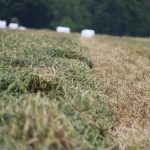Sweeping regulatory changes at the Canadian Food Inspection Agency and limited funds for research are among the challenges facing fruit and vegetable growers, says Ron Lemaire, president of the Canadian Produce Marketing Association.

“The foundation for Canada’s fresh produce supply chain is made up of approximately 25,000 small-, medium- and large-size farms that produce vegetables, fruits and potatoes,” he told the Commons agriculture committee. “The produce industry is one of narrow margins with little bandwidth to absorb rising costs.
“It’s critical to the sustainability of the industry that research and innovation enable the industry to increase its productivity and reduce costs,” he added. There are fears within the industry that the research funding model of 75 per cent government and 25 per cent industry funding could be terminated by the federal and provincial governments.
“There is little ability in our industry to increase the dollars devoted to these research projects at this time,” he said. “A decrease in the ratio of the government contribution for research projects will only have an effect of decreasing the number of projects overall.”
Read Also

How much nitrogen can farmers really cut?
Manitoba fertilizer trials look for nitrification inhibitor sweet spot, to lower greenhouse gas emissions and cost without hurting yield.
With the introduction of regulations to implement the Safe Food for Canadian Act imminent, the agri-food industry is looking for support “to meet the new requirements being delivered in the coming years,” Lemaire said.
“Given the substantial investment that our federal and provincial governments will be making under this framework, it is important to ensure that the regulatory burdens are not counterproductive to our efforts. A responsive, science-based regulatory framework that allows for the timely approval of new ingredients, product and processes, is essential.”
The industry also has international market access concerns for fresh produce because of the non-tariff barriers related to food safety or plant health it faces. “Industry alone cannot meet the requirements of foreign governments in these areas.”
Agriculture Canada and the Canadian Food Inspection Agency need to be adequately resourced to respond to other countries’ requirements or proposed market access gains from trade deals will have little result.
“The Canadian produce industry works in a fast-paced market and needs to be flexible to meet changing demands,” he said. “Government support should work to be not only reactive but flexible to enable our businesses to grow.”
The industry also needs to begin production of new crops that it has little experience with to meet domestic and international demands, he added. “In the changing demographic in Canada we are seeing many new opportunities for growing bok choy and a range of new products that we traditionally would never have grown. Sweet potatoes — yams — there’s demand, so how do we get there?”
The industry needs help in “understanding what that market needs, ensuring that we’re growing the right product to ship into those markets and that we are creating the right trade agreements with those markets to enable free and open trade.” agreements with those markets to enable free and open trade.
“We can grow some of the best products in the world. Ensuring that we have access to the right production tools is essential. As an example, we’re currently going through an experience where we’re seeing the deregistration of certain pest-management products that are used in the produce industry, products that are currently used and approved in many other jurisdictions around the world. The deregistration of those products will put Canadian growers at a significant disadvantage in growing and shipping product to foreign destinations.”
Governments also need to speed up the introduction of new plant-protection tools or it’ll be “hard for our growers to be competitive,” he noted.
The produce industry is a very unique entity, Lemaire explained. This important economic engine is made up of rural, provincial, national and multinational companies, all working together to increase the consumption of fruit and vegetables.
“We make an important contribution to the national economic output and employment. In 2013, the fresh fruit and vegetable sector supported over 147,000 jobs, created $11.4 billion in real GDP and contributed $1.3 billion in personal income tax and $840 million in corporate taxes, and yet significant potential for growth still exists. This growth will be fostered by many factors, including access to markets, effective regulatory frameworks and the continuous commitment by both government and industry to innovation and improvements in the sector.”
The produce sector faces a major labour challenge. The Canadian Agricultural Human Resource Council estimates that horticulture represents 50 per cent of the labour gap in Canadian agriculture; that means the horticultural sector is short over 29,000 workers, Lemaire said.
“This highlights only the shortage at the grower level and does not include shortages through the rest of the supply chain, which would surely add thousands more,” he said. “Automation and robotics are used in planting, picking and packing of produce, all helping to reduce the demand on labour, while also reducing waste and improving productivity, but automation cannot replace all labour needs.”















